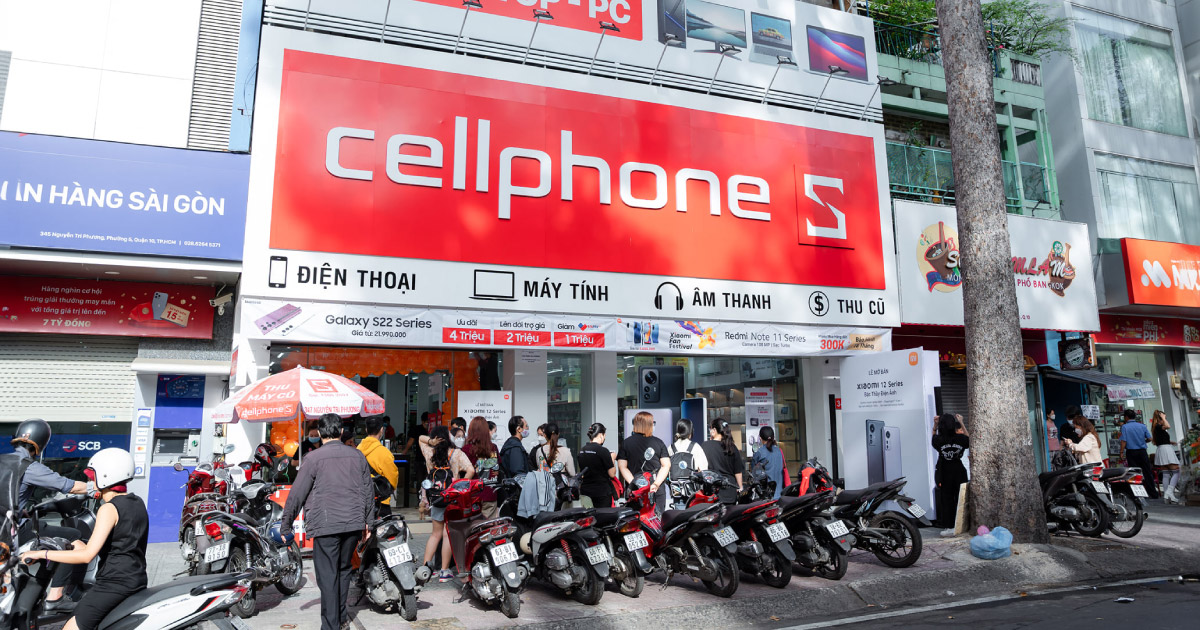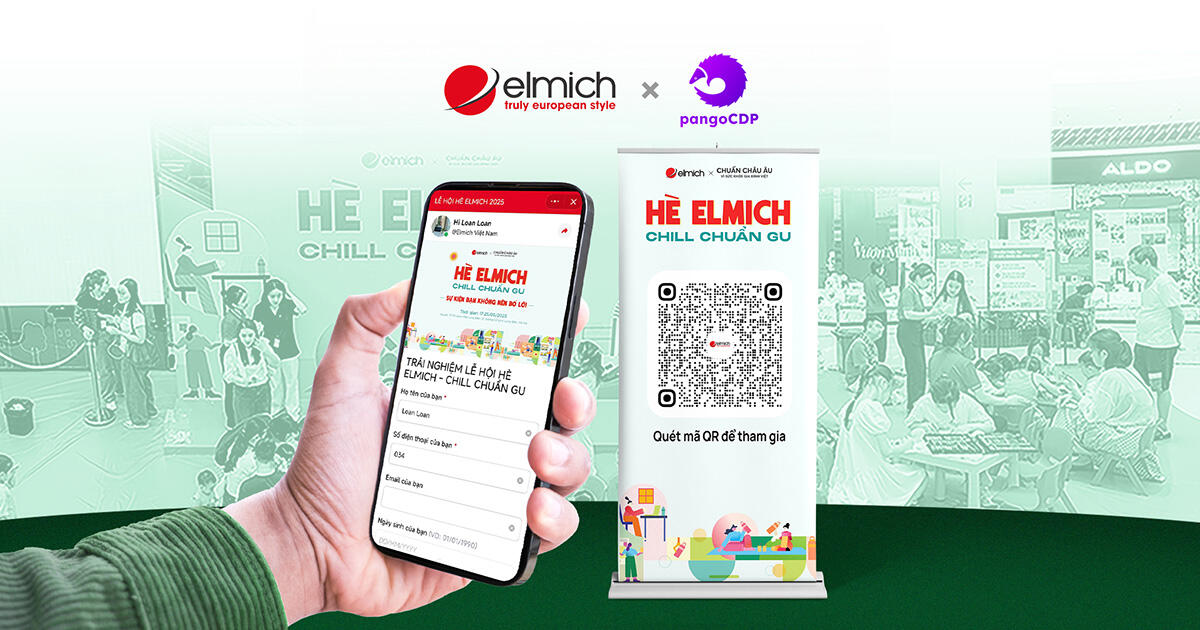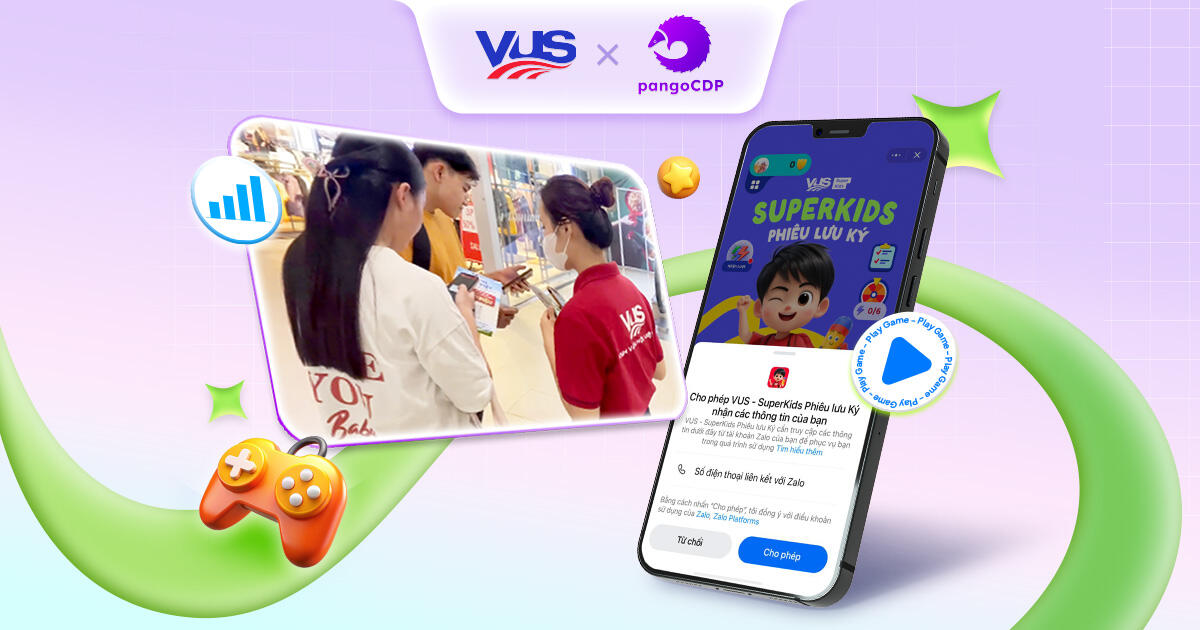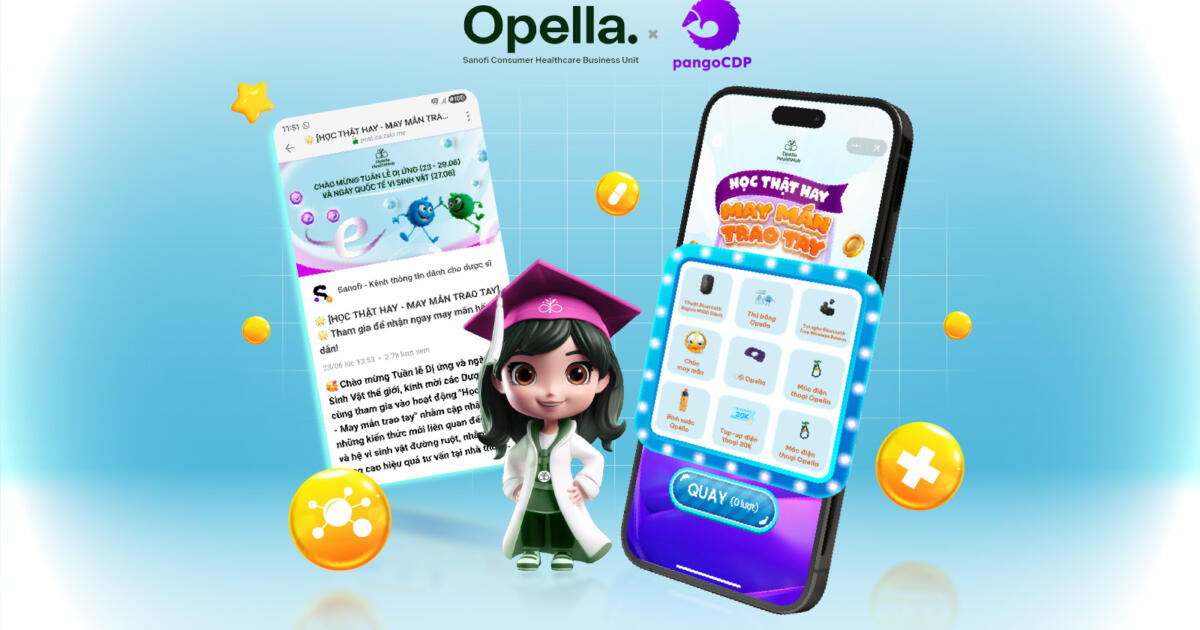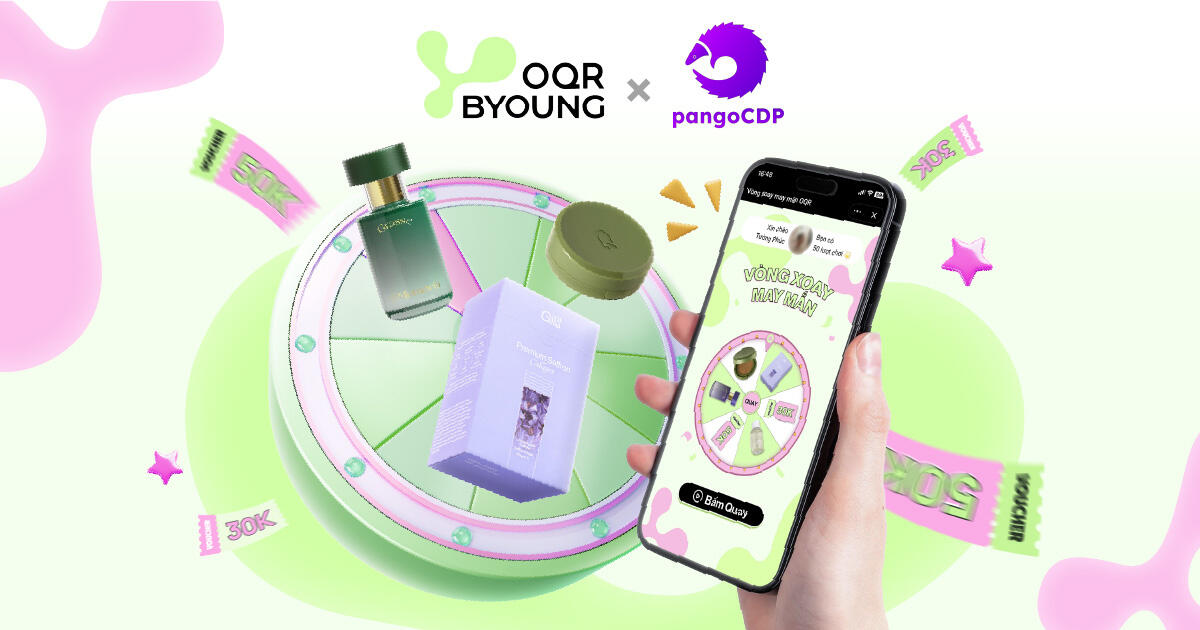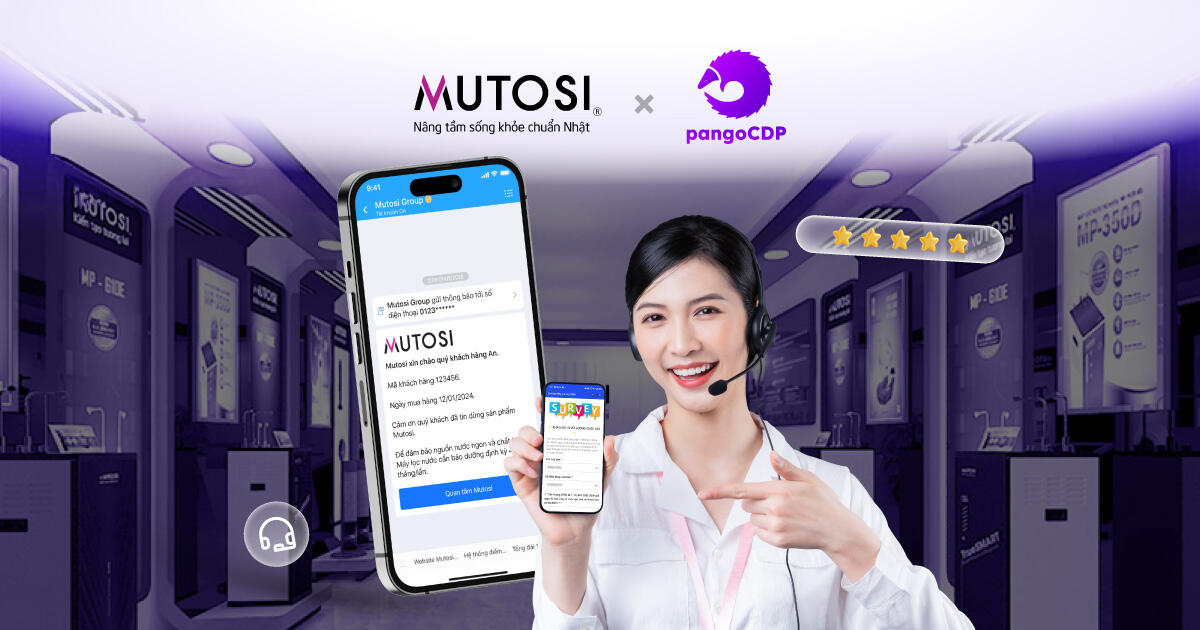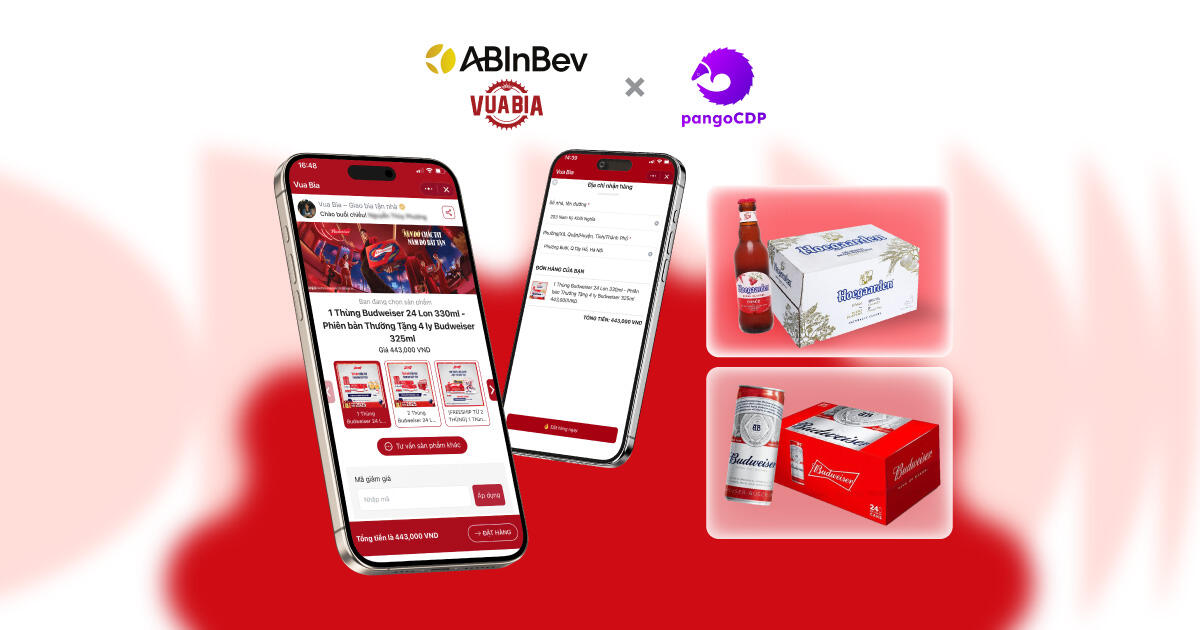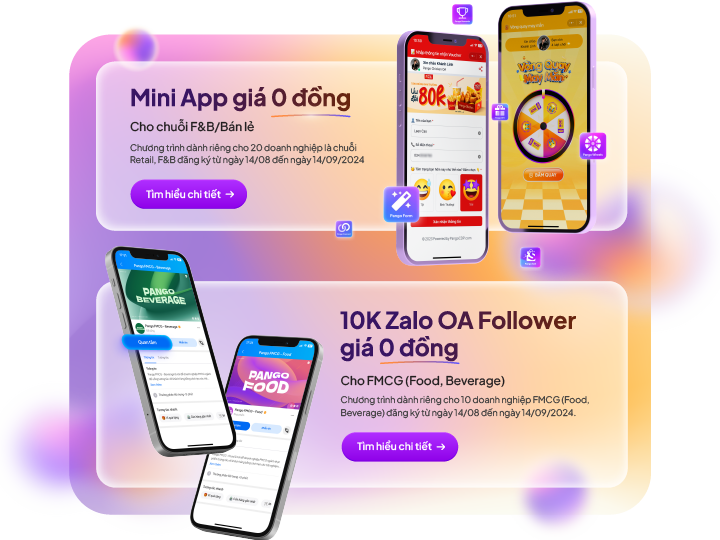CellphoneS leverages data to understand user behavior across both online and offline channels, by creating a seamless connection between channels and focusing on providing the best experience for customers. Let’s dive into the details with PangoCDP in the following article!
In the retail industry of mobile products/smart devices, especially for well-established brands like Samsung and Apple, approximately 10% of customers see online advertising and will buy online. The remaining customers prefer to experience the product in-store before making a decision. Another aspect is that young customers who are familiar with technology will tend to buy online, whereas older customers still want to verify the product in person before trusting online advertisements.
Given this reality, the question arises: how to comprehensively care for and interact with users from online to offline?
CellphoneS has chosen to allocate resources into two main streams to take care of customers from online to offline.
For online channels, CellphoneS’s strategy is to reach customers through paid advertising and SEO activities, forum (Sforum) and social platforms (Social – Facebook, Youtube, Tiktok, Zalo…), participate in forums and use social networks to provide users with comprehensive product knowledge and increase brand awareness. This information helps create transparency about products, builds trust, and encourages users to experience the product in-store. The goal of this is to direct users to the products and build CellphoneS as a top-of-mind brand, so that when a need arises, customers will immediately think of CellphoneS. At the same time, the customer care team, including CRM and Telesale, supports groups of customers who are interested in the products. CellphoneS does not prioritize one channel over another, as both contribute to the company’s overall objectives.
For the offline channel, when customers come to the store, the CellphoneS team uses several tools to measure and track customer interactions. Data from online to offline is described as follows: through online data, CellphoneS can identify users’ cookies and understand the behavior of customers in the past (purchased products, interaction channels with the brand). They can also predict customers’ potential and the level of potential.
However, when measuring online and offline (O2O), CellphoneS is only confident with online measurement. When customers switch from online to offline, CellphoneS cannot track their journey. The transition phase between online and offline is often influenced by many factors, such as seeing attractive billboards, referrals from relatives or friends, or simply trust in the brand. These are uncontrollable data. When customers come to the store, the focus shifts to the sales process, consultation, and product display to optimize the customer experience.
What is the right direction for chain retailers?
In the retail industry, large chain businesses in Vietnam often focus on pricing strategy, opening many stores and conducting marketing to cover the market without focusing too much on tracking and measuring efficiency. This method still works, however, if we look at it from a more sustainable perspective, we will see several problems arise.
When sales decline, these businesses don’t know the main reason was the lack of measurement from the beginning. Another problem is that the growth rate of these businesses is usually not high and the profit margin is almost only at breakeven or even capital loss.
When businesses only focus on marketing at a simple level such as running a discount program and spending money on advertising without paying attention to measurement, the sinking and waste costs of the business will increase. After a period of struggle, they are forced to research and learn from companies that have applied powerful technology to measure and collect data in the market.
Any business can experiment and apply the Customer Data Platform (CDP), but in order for CDP to operate effectively, businesses need to have a solid mindset and proper initial measurement. If this is lacking, we need to start step by step, like reviewing existing data and asking related questions: Is the data clean? Has the data been used in past marketing campaigns? How effective were those campaigns?
Only when we realize the data problems in the early stages, can we take the next steps correctly, avoiding the risk of making leaps without a solid understanding of the user’s perspective. Such foundationally weak leaps will lead businesses from small to larger problems. Without a strong foundation, all applied technology risks failure.
“A key marketing principle is not just to provide solutions and reach all users, but to engage and maintain interaction with customer groups that fit the business ecosystem.”
The Master Channel – an effective tool to help retail businesses maintain interaction with customers
Businesses inherently possess numerous interaction channels with customers, so data is scattered everywhere. Just like how we strive to reach higher levels to obtain more valuable items when playing the legendary Gold Miner game, retail businesses’ treasure also exists at different levels with more progressive and sustainable value.
Here’s how CellphoneS gathers and filters data into five levels for easy exploitation.
Level 1: Awareness, defined as customers who know the brand but do not know the product. For this group, CellphoneS delivers introductory messages and useful information via email/SMS to remind customers about the brand.
Level 2: Interest, defined as customers who interact on the website or any platform where CellphoneS has collected cookie identifiers, and can use the system to classify customer files by segment.
Instead of advertising Samsung’s new products to a mass customer base, this data helps identify customers who have previously purchased Samsung or are interested in this brand’s product line. For this segment, the messages sent focus on the product line they are interested in, resulting in a higher Click Through Rate (CTR) than Level 1 customers.
Level 3: Desire, at this level, customers are further segmented by “desire to own the product.”
- Interaction: Customers interacting with the product on the website or social media by commenting, reviewing, or chatting about the product.
- Lead Generation: Customers who want to receive information, leave their details on registration/contact forms.
- Trigger: Customers who have selected the product but are waiting for a reason to decide to buy, such as participating in games or filling out surveys to receive purchase vouchers.
Level 4: Customers who have already made a purchase. At this level, customers have had a positive experience with the purchase process. This purchase data helps CellphoneS maintain the relationship by providing personalized messages, upgrading after-sales services, and facilitating repeat purchases.
Level 5: Loyalty customers. At this stage, CellphoneS has complete information about order value, purchase frequency, and customer insight at a deep level. This data helps CellphoneS create more engagement campaigns and motivate customers to share a great buying experience with their friends and relatives. gradually converting them from loyalty to advocacy groups.
With 360-degree customer insights, the question arises: What is the ideal frequency to engage customers?
Of course, we cannot apply a common formula across the entire retail industry, because the customer characteristics of each industry are not the same. For CellphoneS, the ideal frequency is 3-5 messages per month. For customers at the “in trust” and “desire” levels, the messages sent are personalized to make customers feel the brand cares about their needs.
The two main channels that CellphoneS uses today are SMS and ZNS (Zalo Notification Service). SMS is the most accurate and effective channel but the most expensive in CRM; therefore, CellphoneS is looking to move the interaction channel to ZNS to save costs. Each interaction channel has its own limitations and advantages, CellphoneS’s strategy is to prioritize quick, timely, and low-cost interaction channels while maintaining high-cost traditional channels such as SMS for cases where ZNS cannot reach.
It can be seen that the path to conquering retail industry data is not easy. The constant change in markets and technology forces businesses to continuously update, change and adapt. This is a challenge that only the brave and creative can face. By capturing trends, updating technology and learning deeply about customers, we can lead, maintain a competitive edge, and achieve breakthroughs in the retail industry.
Not only data exploitation strategies, but also detailed marketing campaign implementations for businesses based on data orientation and much new knowledge around The Master Channel will be presented in detail in The Main Interaction Channel – The Master Channel, Volume 1.
Six chapters of the book will guide readers through the impressive development journey of interaction methods between businesses and customers.
From the most primitive forms to multi-dimensional interactions in the smartphone era, the book will present successful stories along with leading global brands in boosting revenue by enhancing customer experience, explaining the success of The Master Channel concept when applied at two leading Vietnamese companies, Nutifood and CellphoneS.
The book is now available at Fahasa, Phuong Nam, Hai An, Ca Chep bookstores, and online at 24h bookshops and e-commerce platforms like Tiki, Shopee, and TikTok Shop. You can also quickly order the book here: https://i.o2o.vn/H767
